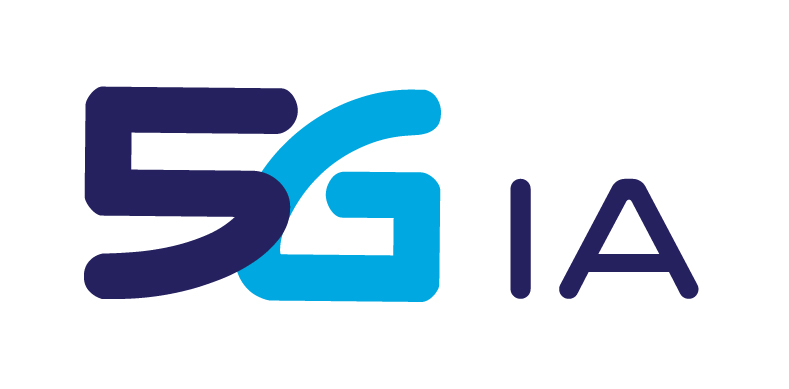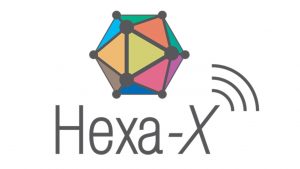

- About us
- Getting Involved
- Plans & Papers
- Events
- European 5G Activities
- Media & News
- Contact
Hexa-X

| Horizon 2020 call | H2020 – ICT- 2020 |
| Topic | ICT-52-2020 |
| Type of Action | RIA |
| Duration | 36 months |
| Start date | January 1st, 2021 |
| Project title | Hexa-X : A flagship for B5G/6G vision and intelligent fabric of technology enablers connecting human, physical, and digital worlds |
Website: hexa-x.eu Social media: Coming Soon Contact: Hexa-X-Contact@5g-ppp.eu
Abstract:
A flagship for 6G vision and intelligent fabric of technology enablers connecting human, physical, and digital worlds
2030 and beyond, Europe and the world will face opportunities and challenges of growth and sustainability of tremendous magnitude; proactively tackling the issues of green deal efficiency, digital inclusion and assurance of health and safety in a post-pandemic world will be key. A powerful vision is needed to connect the physical, digital, and human worlds, firmly anchored in future wireless technology and architectural research. The Hexa-X vision calls for an x-enabler fabric of connected intelligence, networks of networks, sustainability, global service coverage, extreme experience, and trustworthiness.
Wireless technologies are of critical relevance for our society and economy today; their importance for growth will continue to steadily increase with 5G and its evolution, enabling new ecosystems and services motivated by strongly growing traffic and trillions of devices. The ambition of the Hexa-X project includes developing key technology enablers in the areas of:
- fundamentally new radio access technologies at high frequencies and high-resolution localization and sensing;
- connected intelligence through AI-driven air interface and governance for future networks, and
- 6G architectural enablers for network disaggregation and dynamic dependability.
Main Objectives:
Hexa-X vision on 6G and research challenges
In the past four decades, driven by continuous wireless innovations and by market needs, mobile networks and the telecommunications industry have significantly transformed human society and the lives of billions. The primary focus is always to meet peoples’ needs to communicate anywhere, anytime. Since the time of 4G, the focus has been extended to delivering a digital infrastructure that also supports professional services, vertical sectors, and machine-to-machine communication. With the advent of 5G, this move has been amplified considerably. 5G is expected to pave the way for the digitalisation and transformation of key industry sectors like transportation, logistics, commerce, manufacturing, health, mining, smart cities, and public safety. This trend of digitalisation, making industries more connected, automated, and smart, in conjunction with forecasted consumer interest for increasingly demanding services (e.g., AR/VR at scale) will continue. Therefore, the need for connectivity services is expected to keep growing exponentially, and will call for bitrates at the order of hundreds of Gbps to Tbps.
But this is not all.
While 5G has enabled us to consume digital media anywhere, anytime, the technology of the future should enable us to embed ourselves in entirely virtual or digital worlds. In the world of 2030, human intelligence will be augmented by being tightly coupled and seamlessly intertwined with the network and digital technologies. With advances in artificial intelligence, machines can transform data into reasoning and decisions that will help humans understand and act better in our world. As the domestic and industrial machines of today transform into swarms of multi-purpose robots and drones, new man-machine haptic and thought interfaces to control them from anywhere should become an integral part of the future network. As illustrated in Figure 1 below, we envision a future in which everyday experience is enriched by the seamless unification of the physical, digital, and human worlds, achieved through the new network and device technologies. Such a transformation will undoubtedly generate unprecedented economic opportunities and societal challenges as we move towards the 2030 timeframe; moreover, it will call for a fundamental shift in the way mobile networks are designed. Multiple key requirements must be reconciled, such as how to serve the massively growing traffic and the exploding numbers of devices and markets, while accomplishing the highest possible standards regarding energy efficiency, security, and efficiency in deployment (coverage) and operation, and enabling sustainable growth in a trustworthy way – this is the context for the 6G wireless networks vision. The main motivation factors are:
Technology push
The advent of key technologies such as Artificial Intelligence (AI), radio access beyond 100 GHz, network virtualisation and disaggregation concepts promise to add important abilities and design dimensions for wireless networks. A timely start of a technology and concept evaluation is required, even if some of these technologies are still on a low Technology Readiness Level (TRL), to understand the potential performance and impact on the overall system architecture. It is crucial to apply these new technologies to excel in new usage domains, and for making them indispensable parts of the future society.
Society and industry pull
Climate change, pandemics, digital divide, social inequalities, as well as distrust and threats to democracy, are some of the unprecedented societal challenges of our times. It is of utmost importance to mitigate these devastating challenges, while also creating opportunity for innovation-lead growth and employment. Wireless networks, being the central component of a digitalised society, must reflect such complex needs and opportunities and proactively provide sustainable digital solutions, to help address United Nations (UN) and European Sustainable Development Goals (SDGs). Digitalisation of industry sectors will continue to improve efficiency and resilience of the economy, promoting sustainable growth and creating meaningful jobs, supporting the transformation of Europe to a strong circular economy.
In light of the above, the 6G flagship initiative Hexa-X has been established, by bringing together the key industry stakeholders, along with the full value-chain of future connectivity solutions ranging from network vendors, operators, verticals, and technology providers (e.g., software and Internet of Things (IoT) solutions), as well as the most prominent European research institutes and universities in this domain, streamlining expert forces and creating a critical mass to lead an integrated effort of research and development towards 6G.
List of Participants
| 1 | Coordinator | NOKIA SOLUTIONS AND NETWORKS OY | FI |
| 2 | ERICSSON AB | SE | |
| 3 | AALTO KORKEAKOULUSAATIO SR | FI | |
| 4 | ATOS SPAIN SA | ES | |
| 5 | B-COM | FR | |
| 6 | CHALMERS TEKNISKA HOEGSKOLA AB | SE | |
| 7 | COMMISSARIAT A L ENERGIE ATOMIQUE ET AUX ENERGIES ALTERNATIVES | FR | |
| 8 | ERICSSON ARASTIRMA GELISTIRME VE BILISIM HIZMETLERI ANONIM SIRKETI | TR | |
| 9 | ERICSSON MAGYARORSZAG KOMMUNIKACIOS RENDSZEREK KFT | HU | |
| 10 | SZAMITASTECHNIKAI ES AUTOMATIZALASI KUTATOINTEZET | HU | |
| 11 | INTEL DEUTSCHLAND GMBH | DE | |
| 12 | NEXTWORKS | IT | |
| 13 | NOKIA SOLUTIONS AND NETWORKS GMBH &CO KG | DE | |
| 14 | ORANGE SA | FR | |
| 15 | POLITECNICO DI TORINO | IT | |
| 16 | QAMCOM RESEARCH AND TECHNOLOGY AB | SE | |
| 17 | SIEMENS AKTIENGESELLSCHAFT | DE | |
| 18 | TECHNISCHE UNIVERSITAET DRESDEN | DE | |
| 19 | TECHNISCHE UNIVERSITAT KAISERSLAUTERN | DE | |
| 20 | TELECOM ITALIA SPA | IT | |
| 21 | TELEFONICA INVESTIGACION Y DESARROLLO SA | ES | |
| 22 | UNIVERSIDAD CARLOS III DE MADRID | ES | |
| 23 | OULUN YLIOPISTO | FI | |
| 24 | UNIVERSITA DI PISA | IT | |
| 25 | WINGS ICT SOLUTIONS INFORMATION & COMMUNICATION TECHNOLOGIES IKE | EL |





